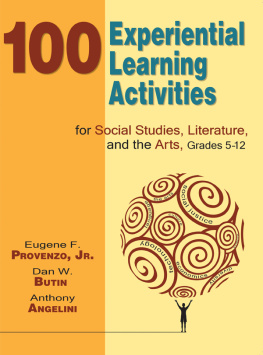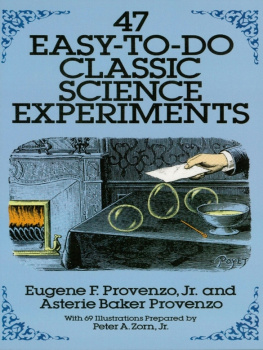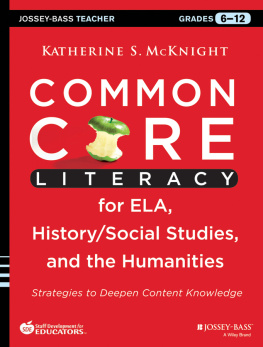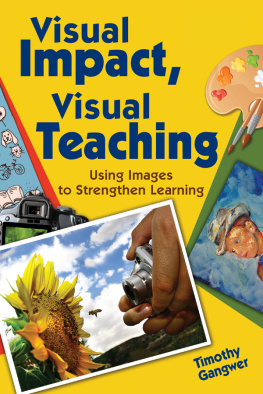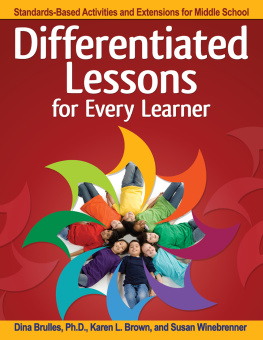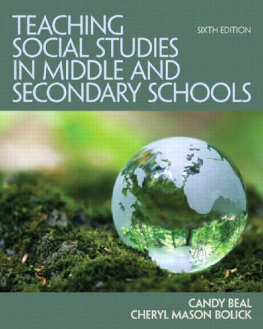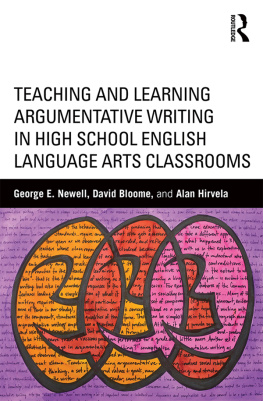Copyright 2008 by Corwin Press
First Skyhorse Publishing edition 2015
All rights reserved. No part of this book may be reproduced in any manner without the express written consent of the publisher, except in the case of brief excerpts in critical reviews or articles. All inquiries should be addressed to Skyhorse Publishing, 307 West 36th Street, 11th Floor, New York, NY 10018.
Skyhorse Publishing books may be purchased in bulk at special discounts for sales promotion, corporate gifts, fund-raising, or educational purposes. Special editions can also be created to specifications. For details, contact the Special Sales Department, Skyhorse Publishing, 307 West 36th Street, 11th Floor, New York, NY 10018 or .
Skyhorse and Skyhorse Publishing are registered trademarks of Skyhorse Publishing, Inc., a Delaware corporation.
Visit our website at www.skyhorsepublishing.com.
10 9 8 7 6 5 4 3 2 1
Library of Congress Cataloging-in-Publication Data is available on file.
Print ISBN: 978-1-63450-305-1
eBook ISBN: 978-1-5107-0079-6
Printed in China
Preface
T his book is a professional collaboration that grew out of our mutual interest in experiential learning. While attending the American Educational Research Association meeting several years ago in Chicago, Dan and Gene met for dinner. Dan explained that he was interested in writing a book on experiential learning. Gene said he had been collecting materials for a hands-on set of learning experiences that were based on many of the teaching methods he used in his undergraduate classes at the University of Miami and that he felt they could easily be adapted for use in middle school and high school. We decided that we could collaborate on the creation of a book.
Over the course of the next two years, we exchanged materials. Dan articulated the books general philosophy as reflected in the Introduction to this book, and Gene concentrated on the activities. Anthony Angelini, a former student of Dans at Gettysburg College and now a high school social studies teacher, worked with Dan to critique and revise the activities in the book and to develop the curriculum matrices for each activity.
Eugene F. Provenzo, Jr., University of Miami Dan Butin, Cambridge College
Acknowledgments
The publisher would like to thank the following individuals for their contributions to the work:
Jerome I. Leventhal
Professor Emeritus
Temple University Department of Curriculum, Instruction, and Technology in Education
Philadelphia, PA
India Meissel
Lead Teacher
Lakeland High School
Suffolk, VA
Daniel K. Thompson
Assistant Professor
Penn State University
University Park, PA
David C. Virtue
Assistant Professor
University of South Carolina
Columbia, SC
About the Authors

Eugene F. Provenzo, Jr. is a professor in the Department of Teaching and Learning, School of Education, University of Miami. He is the author of more than fifty books on education, computing, history, and culture, including Video Kids: Making Sense of Nintendo (1991) and Critical Literacy: What Every American Ought to Know (2005). With Sage Publications, he is the editor of Critical Issues in Education (2006) and is editor-in-chief of Sages forthcoming Encyclopedia of the Social and Cultural Foundations of Education (anticipated publication fall 2008).

Source: Kim Indresano Photography.
Dan W. Butin is an associate professor and assistant dean of Cambridge Colleges school of education. He is the editor of Service-Learning in Higher Education (2005) and Teaching Social Foundations of Education (2005), and author of a forthcoming book (from Corwin Press) on how to complete a timely and rigorous dissertation in education. Dr. Butin is an editorial board member of the journal Educational Studies . His research focuses on issues of educator preparation and policy and active learning strategies in higher education. Prior to working in higher education, Dr. Butin taught middle school in an adult GED program and was the chief financial officer of Teacher For America. More about Dr. Butins teaching and research can be found at http://danbutin.org/.

Anthony Angelini is a graduate of Gettysburg College where he worked as a research assistant to Dr. Dan Butin, one of the results of which is this book. He is now a social studies teacher at Gettysburg Area High School working with students of various grade levels.
Introduction
I n Teaching to Transgress, bell hooks (1994) offers a vivid metaphor of active learning. Quoting a Buddhist writer, she depicts the exuberance of teaching as
preparing for groundlessness, preparing for the reality of human existence, you are living on the razors edge... things are not certain and they do not last and you do not know what is going to happen. My teachers have always pushed me over the cliff. (p. 207)
For her, teaching is about pushing boundaries, examining unthinking and unthinkable positions, and guiding students through a perilous, tumultuous, and exhilarating intellectual journey.
But how do we do that? How do teachers create spaces for learning where students become engaged and motivated to participate and learn? How do we develop truly dynamic learning environments within the constraints of the classroom? Educational researchers have long spoken about the middle and high school classroom as a place of passive learning and disconnected knowledge (Cuban, 1992; Goodlad, 1984). The hidden curriculum of schooling (Jackson, 1990) fosters and prioritizes teacher-centered, textbook-driven, time-parceled, classroom-bounded, and goal-directed learning rather than deep and sustained student learning.
Yet contemporary educational researchers are able to provide extremely useful insights for creating positive classroom environments (Bransford, 2000). For example, students learn when they are able to see the big picture rather than when they are just given a set of disconnected facts, when they are engaged in their learning rather than positioned as passive spectators, and when they believe that such learning leads to meaningful outcomes rather than to predefined and predetermined goals.
WHY THIS BOOK: A ROAD MAP OR GUIDE FOR CREATING EXPERIENTIAL LEARNING ACTIVITIES IN SOCIAL STUDIES AND HUMANITIES
What is all too often absent is a detailed road map that can guide teachers toward creating such learning opportunities. This book provides just such a resource for teachers who want to begin to move beyond traditional models of teaching and learning in the social studies, literature, and the arts. It is grounded in the well-documented reality that students learn by engagingdeeply, passionately, and inquisitivelywith content knowledge (Meier, 2002; Schwartz, Lin, Brophy, & Bransford, 2003) and that such learning not only enhances ones academic achievement but offers opportunities to think differently about how we see ourselves and the world. Moreover, such active learning facilitates the realization that our classrooms and our local and global communities are not so distant from each otherthat, in fact, we can make a difference by learning to think and feel and act differently.

